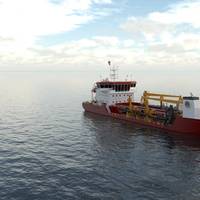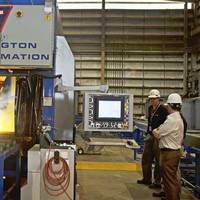ABS to Class Great Lakes' New Hopper Dredge

A second Great Lakes Dredge & Dock Company, LLC (GLDD) trailing suction hopper dredge (TSHD) is to be built to ABS Class at Conrad Shipyard.Able to dredge at depths of up to 100 feet, the 6,500-cubic-yard-capacity vessel is expected to deliver in the first quarter of 2025 and will be a sister ship to the Galveston Island, currently under construction at Conrad Shipyard to ABS Class, with delivery expected in early 2023.Steve Becker, Senior Vice President, Fleet Engineering at GLDD, said, “As the leader in the U.S.
BAE Systems Lays Keel for Dump Scow

BAE Systems has completed another milestone in the construction of the first of two dump scows for Great Lakes Dredge & Dock Company. When complete, both vessels will be used to support dredging operations in the United States. Employees and executives from both companies recently gathered at the foot of the 98 ton keel block as Steve Becker, vice president of Great Lakes Dredge & Dock, drove the ceremonial wedge and welded his initials in the keel of the first vessel, Hull 107.
BAE Systems Starts Construction on Dump

BAE Systems has begun construction on the first of two dump scows for Great Lakes Dredge & Dock Company. Employees and executives from both companies gathered yesterday for a ceremony to mark the start of construction for the first module, which will weigh approximately 87 tons. When complete, the entire first vessel will weigh about 1,600 tons and measure 295 feet long and 62 feet wide, with a draft of 17 feet. The second vessel, which is scheduled to start in January, will be of the same dimensions and capacity. Both 7,500-cubic-yard, split bottom dump scows will be used to support U.S.





